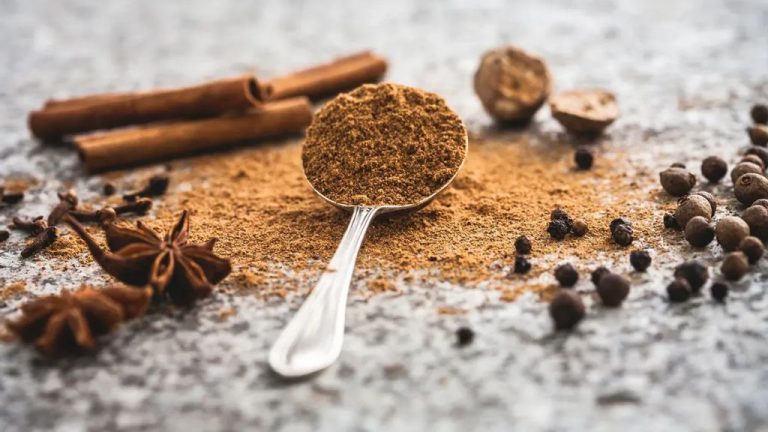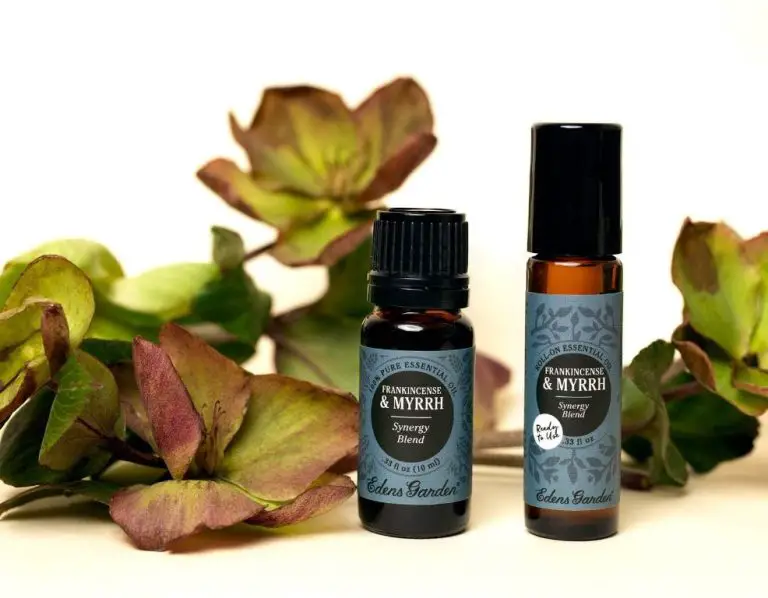What Does Eucalyptus And Peppermint Do For You?
Eucalyptus and peppermint are two types of aromatic plants that have been used for centuries for their medicinal properties. Eucalyptus refers to over 700 species of trees and shrubs that are native to Australia. The leaves of the eucalyptus plant have a distinctive odor and contain key compounds such as eucalyptol that have beneficial effects. Peppermint is a hybrid mint that was first cultivated in Europe in the 18th century by crossing watermint and spearmint. The peppermint plant has a high menthol content which produces its cooling, refreshing fragrance and medicinal effects.
Both eucalyptus and peppermint oils have a long history of use in folk medicine due to their wide range of potential health benefits. Today, these essential oils are commonly used in aromatherapy, personal hygiene products, foods, and natural remedies. Eucalyptus is especially known for its ability to help with respiratory conditions while peppermint is valued for its digestive and mental health uses. This article will provide an in-depth look at the key uses and benefits of eucalyptus and peppermint oils as well as how to properly use them.
Eucalyptus Benefits
Eucalyptus leaves and oil offer several health benefits due to their medicinal properties. Some of the main benefits of eucalyptus include:
Reduce Congestion: Eucalyptus acts as an expectorant, helping to loosen phlegm in the respiratory tract. The antiviral and antibacterial properties of eucalyptus also help fight the cold viruses that can cause congestion.
Antimicrobial Properties: Research shows that eucalyptus oil can help kill bacteria, fungi and certain viruses that cause infections. The main compound responsible is eucalyptol.
Pain Relief: Applying eucalyptus oil topically can help relieve muscle aches and pains. It works as an anti-inflammatory and analgesic.

Stimulates Immunity: Some studies indicate that eucalyptus has immunostimulatory effects, meaning it may help boost immune function. This could help the body fight infection and disease.
Peppermint Benefits
Peppermint provides many health benefits and is often used as an herbal remedy. Some of the main benefits of peppermint include:
Improve Digestion
Peppermint can help improve digestion and relieve symptoms of digestive issues like nausea, gas, bloating, and indigestion. According to one study, peppermint oil capsules reduced total symptoms of irritable bowel syndrome (IBS) by 50% compared to placebo [1].
Relieve Headaches
Applying peppermint essential oil to the temples and forehead has been found to effectively relieve tension headache pain. The cooling effect of menthol in peppermint is thought to help reduce headaches [2].
Boost Energy
Inhaling peppermint essential oil has been shown to increase energy and athletic performance. Menthol may help clear the airways, allowing more oxygen to reach the lungs [3].
Reduce Stress
Peppermint has a calming effect that can help lower stress levels. Drinking peppermint tea and using peppermint aromatherapy may help reduce anxiety and restlessness [1].
Eucalyptus Uses
Eucalyptus has a variety of uses, most commonly in aromatherapy, topical ointments, and cleaning products. The oil extracted from eucalyptus leaves has a strong, woody, and fresh mint-like aroma that makes it popular for aromatherapy. Adding a few drops of eucalyptus oil to a diffuser or vaporizer can help clear nasal passages and relieve coughing (1).
Topical eucalyptus ointments can provide relief from muscle aches and pains when applied to the skin. The numbing and anti-inflammatory properties of eucalyptus make it effective for treating conditions like arthritis, sprained muscles, or backaches when used topically (2).
Due to its antibacterial properties, eucalyptus is also commonly used as an ingredient in soaps, detergents, and household cleaners. The fresh scent of eucalyptus can help mask malodors and provide a cleansing sensation while cleaning (3).
Peppermint Uses
Peppermint has many uses in food, dental products, aromatherapy, and topical ointments:
Food flavoring: Peppermint is one of the most popular food flavorings. It is used to provide a minty flavor and aroma in candies, teas, ice creams, gum, and more (WebMD).
Dental products: Peppermint oil is a common ingredient in toothpastes, mouthwashes, and chewing gum for its minty taste and ability to promote fresh breath (Mount Sinai).
Aromatherapy: Peppermint essential oil is used in aromatherapy practices for its invigorating and uplifting scent. It may help relieve headaches, nausea, and stress when inhaled (NCCIH).
Topical ointments: Menthol, the active ingredient in peppermint, is used in topical creams, ointments, and lotions to provide a cooling and soothing effect on skin. It may help relieve muscle aches, itching, and pain (Mount Sinai).
Eucalyptus Risks
While eucalyptus has many benefits, there are some risks to be aware of when using it, especially internally. The most notable risk is that eucalyptus oil can be toxic if ingested. The eucalyptol found in eucalyptus oil can cause nausea, vomiting, diarrhea and even seizures if consumed in large amounts (1). Eucalyptus oil is meant for external use only and should never be swallowed. Even small amounts taken by mouth can be dangerous for children.
Eucalyptus oil can also cause skin irritation when applied topically, especially for people with sensitive skin. It is best to do a patch test first before widespread use (2). Diluting the oil can help reduce irritation for some people. Eucalyptus should be used cautiously on or near the face of infants and children because of the risks for aspiration and airway inflammation (3).
Overall, eucalyptus is safe when used properly, but ingesting it can be very harmful. Stick to external applications only and watch for skin reactions.
Sources:
(1) https://www.webmd.com/vitamins/ai/ingredientmono-700/eucalyptus
(2) https://www.mountsinai.org/health-library/herb/eucalyptus
(3) https://www.verywellhealth.com/eucalyptus-uses-benefits-side-effects-dosage-7483449
Peppermint Risks
Peppermint can cause some side effects in certain individuals, especially when taken orally. The most common risks associated with peppermint are heartburn, oral irritation, and skin irritation.
Peppermint relaxes the sphincter muscle between the esophagus and stomach, allowing stomach acids to flow back up, leading to heartburn. People with gastroesophageal reflux disease (GERD) should use caution when taking peppermint oil capsules, as it can worsen symptoms.
The menthol in peppermint can also cause a cooling, numbing effect in the mouth and throat. This may lead to a loss of taste sensation or mild oral irritation in some cases. Sensitivity reactions may occur on the skin from topical use of peppermint oil, resulting in rashes or inflammation.
In rare instances, peppermint oil can trigger allergic reactions and restrict airways if inhaled or taken orally. People with mint allergies should avoid using peppermint products.
To reduce risks, peppermint supplements and essential oils should only be used for short periods under the guidance of a healthcare provider. Those with heartburn, GERD, or mint allergies should exercise particular caution.
How to Use Eucalyptus
There are several ways to safely use eucalyptus oil for health benefits:
Diffusion
Add a few drops of eucalyptus oil to a diffuser and inhale the aroma throughout the room. Diffusing eucalyptus oil can help clear sinuses and breathing passages. Do not diffuse near children under age 10. Use eucalyptus in a diffuser for short periods of up to one hour. (Source)
Steam Inhalation
Add 2-3 drops of eucalyptus oil to a bowl of hot water. Place a towel over your head to trap the steam and breathe deeply for 5-10 minutes. Inhaling eucalyptus steam provides relief for congestion, coughs, bronchitis, and asthma. Avoid steam inhalation with eucalyptus oil for young children. (Source)
Topical Application
Dilute eucalyptus oil with a carrier oil like coconut or olive oil before applying to skin. Use a few drops of diluted oil to massage into chest or temples for cough/congestion relief. Apply diluted oil to joints or sore muscles for pain relief. Always do a patch test before widespread use. (Source)
How to Use Peppermint
Peppermint essential oil has many uses and benefits when used properly. Here are some of the top ways to use peppermint oil:
Food
Peppermint oil can be used to add flavor to food and beverages. It is commonly used in candies, ice cream, teas, and cocktails. Only a small amount is needed to provide a fresh minty taste. Be sure to dilute peppermint oil properly before ingesting it (source).
Dental Products
Peppermint oil is added to many oral health products like toothpastes and mouthwashes for its ability to freshen breath. Applying diluted peppermint oil topically to the gums has also been found to reduce gingivitis (source).
Aromatherapy
Inhaling diffused peppermint oil can promote clear breathing and serve as a mental stimulant. Topically applying diluted peppermint oil can also help relieve tension headaches when applied to the temples and forehead.
Topical
When properly diluted with a carrier oil, peppermint oil can be applied to the skin to relieve itching and irritation. It should always be tested on a small area first to check for sensitivity.
Conclusion
In summary, both eucalyptus and peppermint offer numerous health benefits and uses. Eucalyptus is known for its anti-inflammatory, antimicrobial, and antiviral properties, and can be used to relieve congestion, coughs, and sore throats. Peppermint provides cooling, anti-nausea, and digestive benefits, and can be used to treat headaches, upset stomach, and more. Both can be applied topically, inhaled, or taken orally. When using essential oils like eucalyptus and peppermint, be sure to dilute them properly and do a patch test before wider application. Start with low concentrations and increase slowly as needed. Talk to your doctor before use if pregnant, breastfeeding, or on medication. Overall, eucalyptus and peppermint are versatile, natural options to help boost health and wellbeing.



